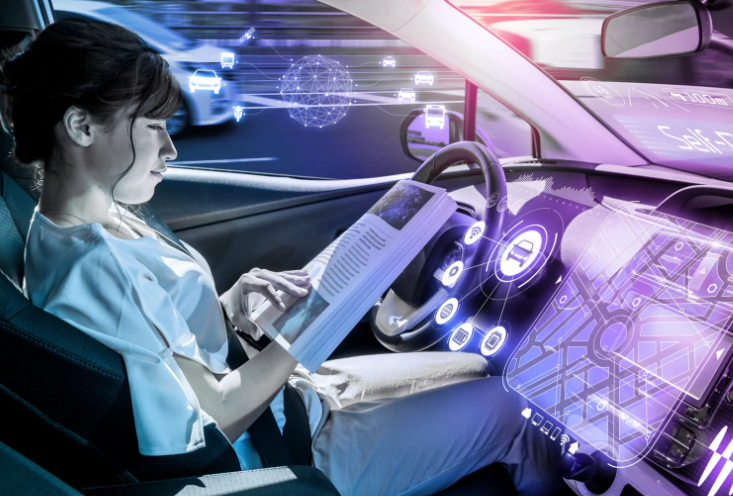Connected vehicles are set for an explosive 91% growth between 2023-2027, with ADAS (advanced driver assistance systems) and infotainment in the driving seat. Juniper Research forecasts that the number of connected vehicles on the road will reach 367 million globally in 2027 – up from 192 million in 2023.
With these levels of scale, ownership of the in-car entertainment experience is already becoming a battleground where automakers compete or partner with media and consumer tech giants for a share of a $3.6 billion market.
Launches and concept vehicles at CES 2023 were an indicator of where things are headed, placing connected experience front-and-centre, with everything from full-dashboard screens to colour-changing paint and car-as-personal-assistant on the horizon. The concept of the vehicle as a ‘third space’ is evolving towards reality – and connectivity has never been more important.
5G firing the engines
As always, 5G emerges as the transformative force that will make it all happen. Its capacity to increase the capabilities of ADAS and in-vehicle infotainment systems will see it accounting for 23% of automotive cellular connections by 2027, according to Juniper.
In this new data-heavy, experience-focused world, high bandwidth, low latency and – above all – seamless connectivity will be the foundation on which everything else is built. As software-defined vehicle development becomes the norm, the heavy lifting behind everything from over-the-air (OTA) updates to bandwidth-intensive premium services will happen in the cloud. Bullet-proof connectivity will be critical.
Connectivity is critical
If 30% of the time people spend in cars will be devoted to interacting with content delivered by in-vehicle entertainment systems, you better believe that connectivity matters. From OTA updates to feature upgrades, premium mobility services and infotainment, connectivity underpins almost every aspect of the software-defined vehicle’s value proposition. That’s why the most innovative automakers understand the importance of controlling that connection.
If you’re going to own the connected experience, you have to be serious about control, now and in the future. The emergence of a “Bring your own MNO” trend in the automotive industry is driven in no small part by the need to know that the cars that come out of production in five years’ time will have the 5G or other connectivity technologies in place to support their vision and innovation. The MNO arrangements automakers have in place today are a fundamental part of that product development roadmap – scaling any technology requires flexibility and a lot of OEMs want the option to compose their own ecosystem with preferred partners.
Connected car, connected future
In a world where the connected experience will be a differentiator, automotive OEMs that can control and localise connectivity will be in the driving seat. Download our eBook, Connected car, connected future and learn more about how connectivity is shaping the future of vehicles, from autonomous driving to home streaming and 5G.

